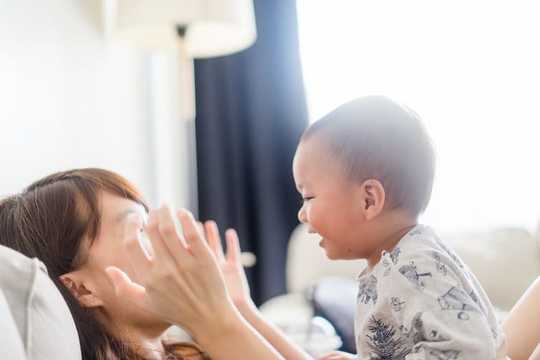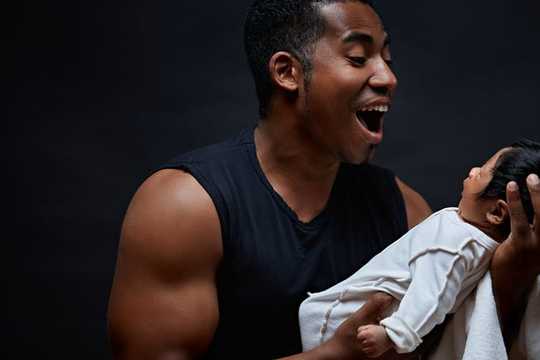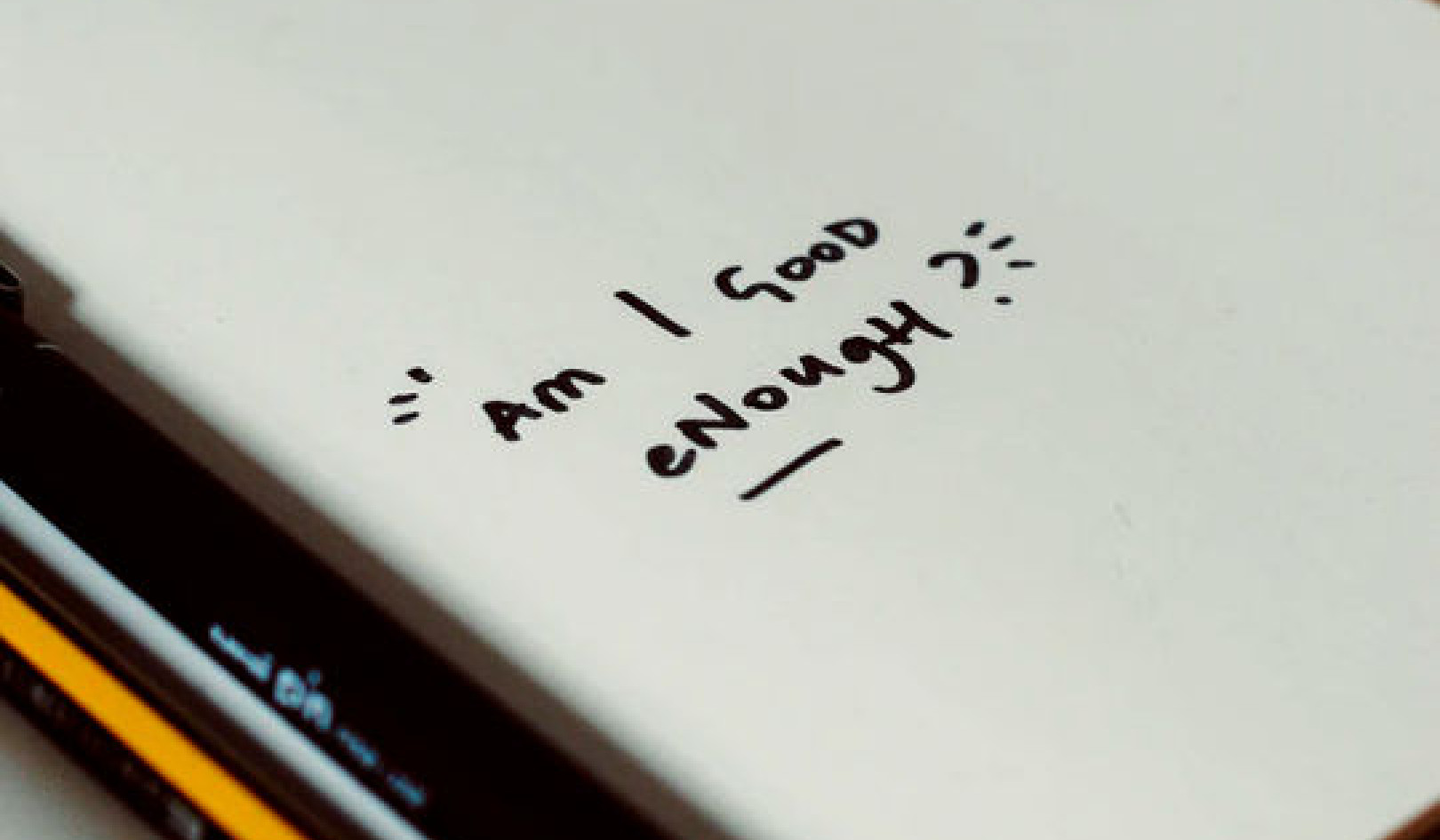 Infants and young children need connection to thrive. (Shutterstock)
Infants and young children need connection to thrive. (Shutterstock)
We are born to connect. As human beings we are relational and we need biological, emotional and psychological connection with others.
We learn how to connect and create the patterns we form during our infancy and early childhood.
These patterns and experiences become embodied in us and become the way we understand how the world and people work. Such early experiences with our primary caregivers teach us what to expect throughout life.
Attachment is the relational dance that parents and babies share together. You can think of this when you see a baby look at their parent and they catch each other’s eyes in a wonderful gaze: the parent smiles and the baby smiles and then the parent kisses and the baby coos. Or, when an infant cries to tell their parent they are hungry, and the parent picks up the baby and provides a warm cozy snuggle and the baby is satiated with a full heart and belly.
This is the dance that creates the framework for the interactions that we have our whole lives and how we understand love.
Babies need loving connection to thrive
René Spitz was a psychiatrist who studied infants and children in orphanages and prisons before Western medicine understood the importance of attachment or connection.
Through his research in the 1930s, Spitz discovered infants and children could die if they were not connected with or touched: they could receive adequate nutrition and health care, but fail to thrive from lack of loving contact.
Spitz filmed babies and toddlers who were deprived of healthy attachment and the images were used to promote changes in how institutions cared for infants and children. Today such images may seem profoundly disturbing and haunting.
How we learn to interact and engage with our primary caregivers is how we engage with people our whole lives. This is how fundamental relationships are to us.
Peek-a-boo is more than a game
Attachment is a relational process which builds throughout infancy and is established at eight months old when the child develops certain cognitive skills. The child develops the cognitive capacity for what educators call object permanence — the understanding of cause and effect, and that people and objects exist when we can’t see them. The child who loves the game peek-a-boo is in this stage of development.
 Peek-a-boo is about understanding that people exist when we can’t see them. (Shutterstock)
Peek-a-boo is about understanding that people exist when we can’t see them. (Shutterstock)
What we learn throughout infancy and childhood are a set of behaviours and ways of thinking and feeling about ourselves and others, to understand how relationships work.
These are what psychologists call working models of the world, the schemas or views of the world the child develops.
For example, how a child understands what is happening if they are hit with a ball will reflect their working model. Do they think the other child hates them and is being mean or does the child who was hit think it was an accident?
A sense of safety or insecurity
These patterns of attachment or ways of understanding interactions are what we learn through our relationships with our caregivers.
A child develops a secure attachment (or relationship) to their parents when the child experiences the parents as safe to explore the world from. The parents’ ability to respond to the child sensitively when the child needs them is crucial to the child forming a secure attachment to them.
Attachment theory provides four categories or ways of understanding attachment behaviour: secure, insecure avoidant, ambivalent and disorganized.
The child with a secure attachment pattern has learned their emotional needs will be met. As an adult, this person finds it relatively easy to be close to others and doesn’t worry about closeness or being abandoned.
The child with an avoidant attachment pattern has learned the parent is not emotionally available and won’t respond when needed. As an adult this person is dismissive of emotions and relationships and doesn’t like to get too close to people.
The child with an ambivalent attachment pattern has learned the parent is sometimes attuned and sometimes emotionally unavailable. As an adult this person is preoccupied by relationships they often worry about being abandoned.
Finally, insecure disorganized attachment — believed to impact 15 per cent of the population — occurs when children have experienced a significant trauma. The child with a disorganized pattern of attachment expresses fear during interactions.
The parent’s attachment classification — the patterns of how they themselves interacted with their own parent — is often passed between generations. That means we tend to parent the way we were parented.
Attachment can shift
Attachment patterns can be different with each parent-child relationship. Patterns can change from insecure to secure.
A child can become more secure if a parent becomes more sensitive to the child’s cues. An adult can become more secure by having a significant relationship that allows them to trust the other to respond to their emotional needs.
Attachment can also change from secure to insecure if the person experiences stressful life events or if the parent becomes less emotionally available to the child.
 A child can become more secure if a parent becomes more sensitive to the child’s cues. (Shutterstock)
A child can become more secure if a parent becomes more sensitive to the child’s cues. (Shutterstock)
Helping your child connect
Helping your child to build the foundations to create positive adaptive relationships with people throughout their whole life is important. Here are some tips:
Comfort your child when they are physically hurt, ill, upset, frightened or lonely.
Respond to and notice your child.
Give your child a sense of trust in the world and the people in it.
Share warm joyful experiences and memories and establish family traditions.
When you leave your child, let them know where you’re going and when you’ll be back and give them a security object to remember you.
Try to be as predictable and positive as possible when reacting to your child’s behaviour.
Physically play and share time, making eye contact, touching and sharing emotions.
Be aware of the amount of time your child is in front of or using technology. All experiences, including the use of technology, affect brain development.
Think about what you want or think is important for the adult you want your child to be. Provide the experiences in childhood to support that vision.
Let’s strive as parents not to be perfect but good enough.![]()
About The Author
Nikki Martyn, Program Head of Early Childhood Studies, University of Guelph-Humber
This article is republished from The Conversation under a Creative Commons license. Read the original article.

Related Books:
Here are 5 non-fiction books on parenting that are currently Best Sellers on Amazon.com:The Whole-Brain Child: 12 Revolutionary Strategies to Nurture Your Child's Developing Mind
by Daniel J. Siegel and Tina Payne Bryson
This book provides practical strategies for parents to help their children develop emotional intelligence, self-regulation, and resilience using insights from neuroscience.
Click for more info or to order
No-Drama Discipline: The Whole-Brain Way to Calm the Chaos and Nurture Your Child's Developing Mind
by Daniel J. Siegel and Tina Payne Bryson
The authors of The Whole-Brain Child offer guidance for parents to discipline their children in a way that promotes emotional regulation, problem-solving, and empathy.
Click for more info or to order
How to Talk So Kids Will Listen & Listen So Kids Will Talk
by Adele Faber and Elaine Mazlish
This classic book provides practical communication techniques for parents to connect with their children and foster cooperation and respect.
Click for more info or to order
The Montessori Toddler: A Parent's Guide to Raising a Curious and Responsible Human Being
by Simone Davies
This guide offers insights and strategies for parents to implement Montessori principles at home and foster their toddler's natural curiosity, independence, and love of learning.
Click for more info or to order
Peaceful Parent, Happy Kids: How to Stop Yelling and Start Connecting
by Dr. Laura Markham
This book offers practical guidance for parents to shift their mindset and communication style to foster connection, empathy, and cooperation with their children.


























